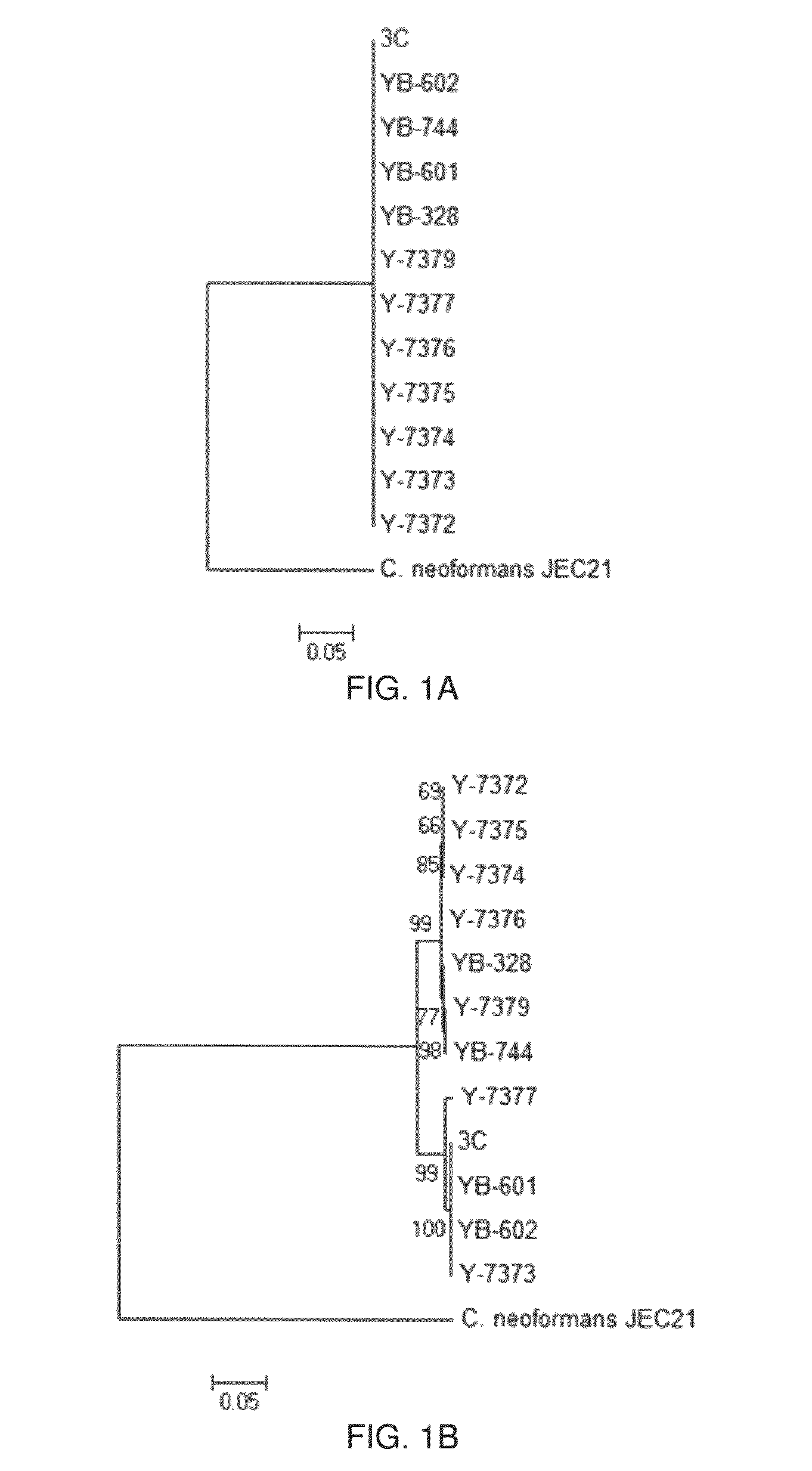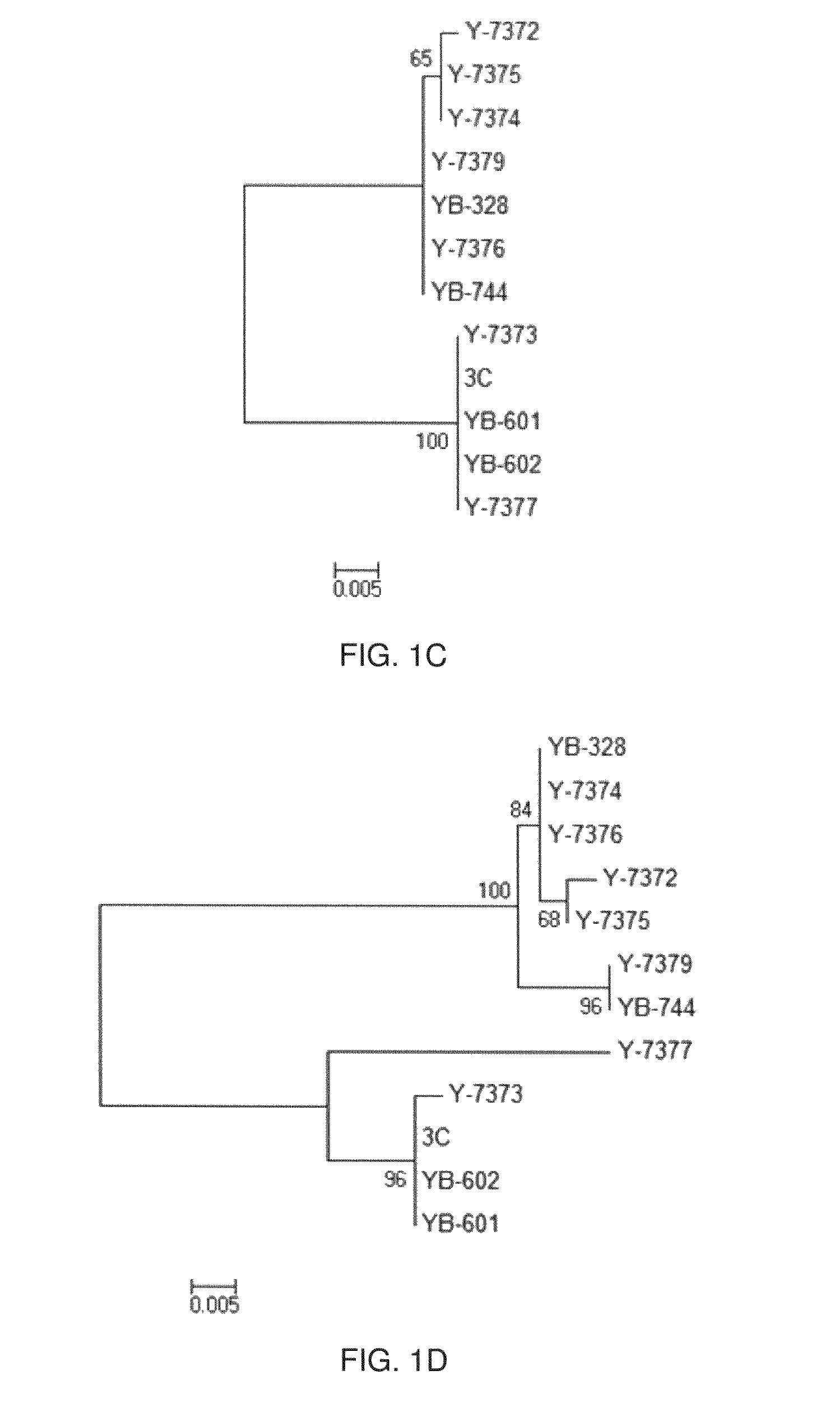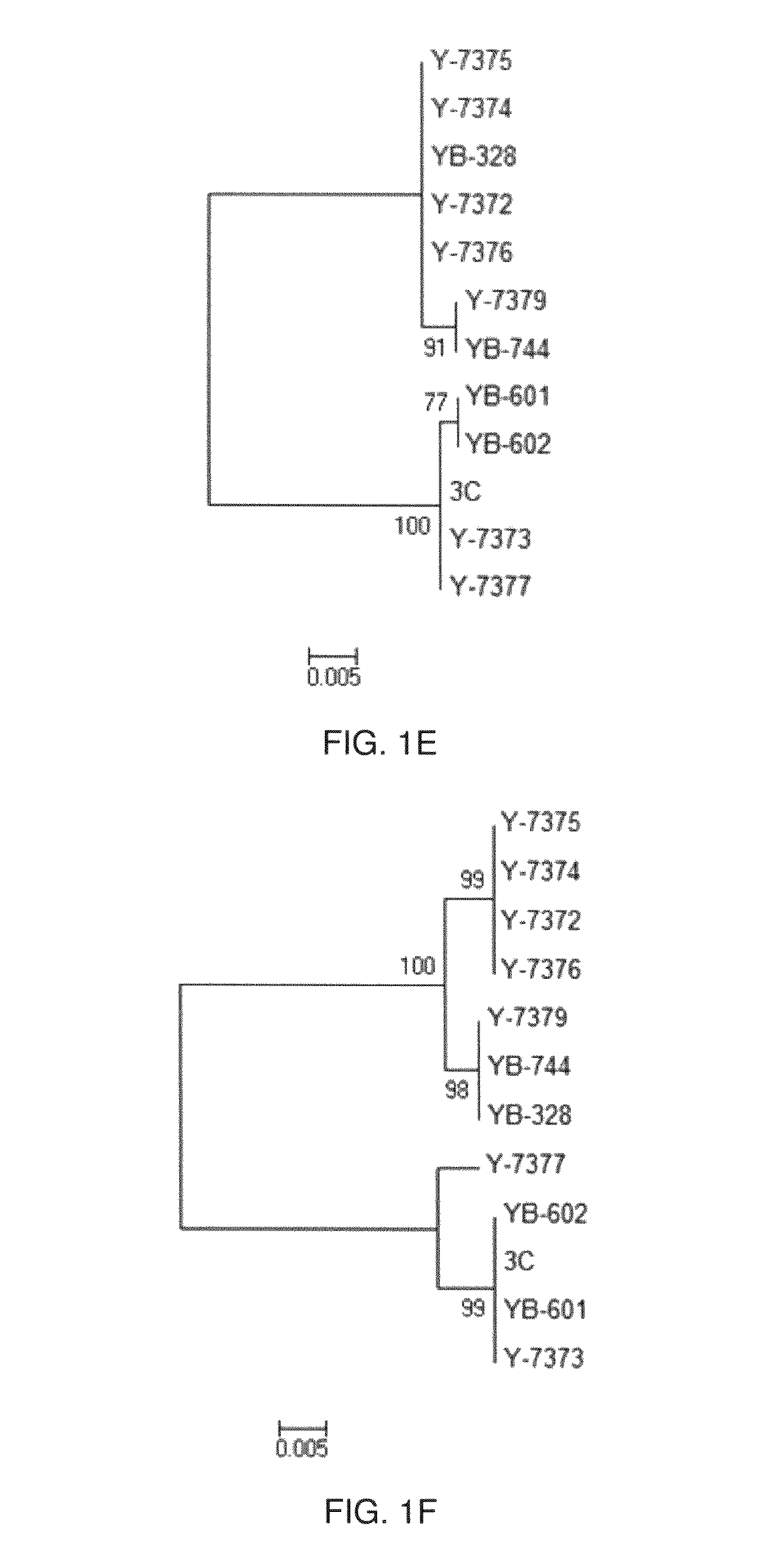Methods for Using Cryptococcus Flavescens Strains for Biological Control of Fusarium Head Blight
a technology of cryptococcus flavescens and fusarium, which is applied in the field of biological control can solve the problems of large scale devastation in the united states, canada and china, and widespread use of chemicals in agriculture, and achieve the effect of reducing the level of fusarium head bligh
- Summary
- Abstract
- Description
- Claims
- Application Information
AI Technical Summary
Benefits of technology
Problems solved by technology
Method used
Image
Examples
example 1
Two Distinct Subpopulations of C. flavescens: Genotype A and Genotype B
[0180]Materials and Methods
[0181]Quantitative PCR (qPCR). Each qPCR reaction had a total volume of 25 μl, consisting of 2.5 μl template DNA, 0.4 pmol / μl of each primer (forward primer h31.2_F: 5′-CGTCAGCGTGTTGCCACTTCGT-3′ (SEQ ID NO: 67); reverse primer h31.2R: 5′-GCTGCTGTCTTGCGGTCGCTTA-3′ (SEQ ID NO: 68)), 12.5 μl iQ™ SYBR® Green Supermix (Bio-Rad Laboratories, Inc., California, USA) and template-free PCR water as the rest of the volume. Template-free PCR water was also used as the template of negative controls. The thermal cycling program was run on the iCycler and the fluorescence data was collected by the iQ™5 detection system (Bio-Rad Laboratories, Inc.). Amplification was two-step with 3 min at 95° C. followed by 40 cycles of 15 s at 95° C. and 1 min at 72° C. Then the melting curve was run from 55° C. to 95° C. with an increment of 0.5° C. and a dwelling time of 10 s at each temperature. The raw data of qP...
example 2
Different Levels of Efficacy of the Two Genotypes of C. flavescens to Control Fusarium Head Blight
[0190]The ability of genotype A and genotype B of C. flavenscens to suppress FHB on wheat was assessed in five separate greenhouse bioassays. Reduction in disease severity caused by pre-inoculation with C. flavescens strains were observed in four of five independent trials. In two of those trials, the observed pattern was statistically significant (P<0.10 by the K-W test) after 16 days of incubation. In total, the Genotype A strains displayed greater biocontrol activity than the B genotype strains in three of five trials.
[0191]Significant reductions in disease severity due to inoculation by C. flavescens were observed at 10 and 16 days post-inoculation (P=0.11 and 0.03, respectively, by the K-W test; FIG. 4). Most significantly, the A genotype reduced disease severity relative to the negative control after 16 days of incubation (PC. flavescens have the capacity to control FHB, and of th...
example 3
Environmental Monitoring of Cryptococcus flavescens Strains with Biological Control Activity Against Fusarium Diseases
[0192]Materials and Methods
[0193]Strains. Cryptococcus flavescens strain OH 182.9 (3C) was obtained from the Northern Regional Research Laboratory (NRRL) under accession number NRRL Y-30216. Six other C. flavescens strains were also obtained from NRRL under accession numbers Y-7372, Y-7373, YB-328, YB-601, YB-602 and YB-744, respectively. All the strains were maintained as glycerol stocks at −80° C. for long term storage.
[0194]Field establishment and 3C application. The experiments of this study were performed in two fields planted with Soft red winter wheat (Triticumaestivum L.) at the Snyder Farm at the northern end of Wooster, Ohio. The first field, subsequently noted as Field One, was planted with Cultivar Hopewell on Oct. 11, 2010. The layout of Field One is shown in FIG. 5. The second field, subsequently noted as Field Two, was planted with Cultivar Freedom on ...
PUM
| Property | Measurement | Unit |
|---|---|---|
| temperatures | aaaaa | aaaaa |
| temperatures | aaaaa | aaaaa |
| elongation factor | aaaaa | aaaaa |
Abstract
Description
Claims
Application Information
 Login to View More
Login to View More - R&D
- Intellectual Property
- Life Sciences
- Materials
- Tech Scout
- Unparalleled Data Quality
- Higher Quality Content
- 60% Fewer Hallucinations
Browse by: Latest US Patents, China's latest patents, Technical Efficacy Thesaurus, Application Domain, Technology Topic, Popular Technical Reports.
© 2025 PatSnap. All rights reserved.Legal|Privacy policy|Modern Slavery Act Transparency Statement|Sitemap|About US| Contact US: help@patsnap.com



